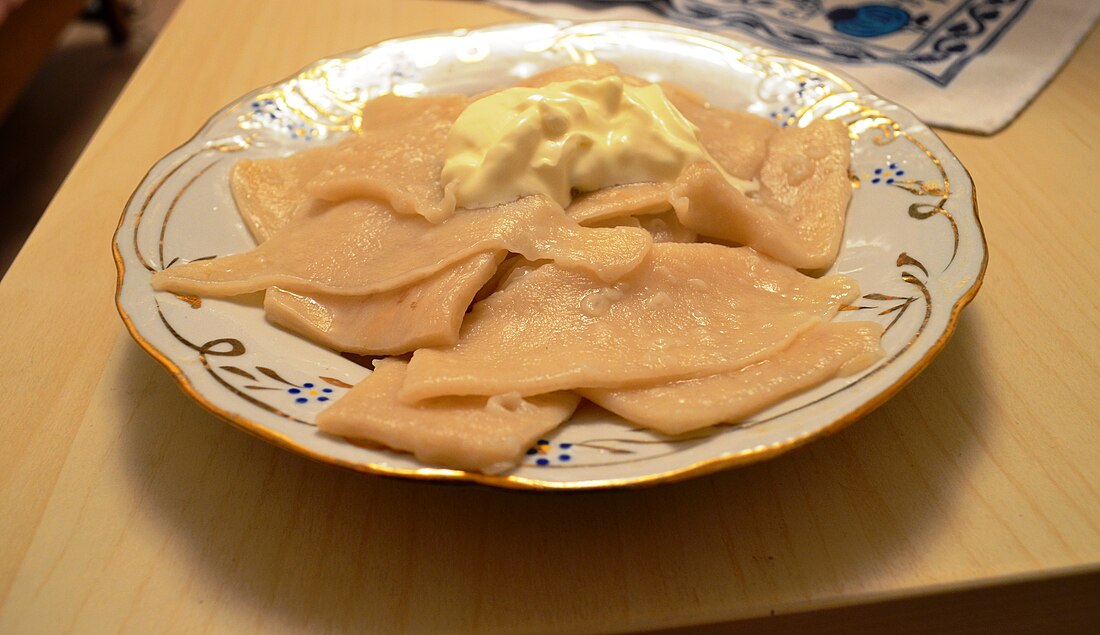Top Qs
Timeline
Chat
Perspective
Lazanki
Traditional dish with large flat pasta From Wikipedia, the free encyclopedia
Remove ads
Lazanki (Belarusian: лазанкі, Polish: łazanki [waˈzaŋ.ki] ⓘ, singular łazanka or łazanek,[1] Lithuanian: skryliai, Ukrainian: лазанки) is a Polish, Lithuanian and Belarusian type of pasta.
This article needs additional citations for verification. (May 2018) |

It consists of wheat, rye or buckwheat dough which is rolled thin and cut into triangles or rectangles. These are boiled, drained, and eaten with melted pork fat, vegetable oil and often sour cream.[2] In Poland, they are commonly mixed with fried cabbage or with soured cabbage and small pieces of sausage, meat and mushrooms.
Remove ads
History
Lazanki has been known in Poland since early Middle Ages, then also in the Polish–Lithuanian Commonwealth. Its older name variant is laga: laganki meaning most likely a stick, a stripe, a wooden stick.[citation needed] The name probably derives from elongated strips cut from flattened dough, or from las/laska, meaning a wooden stick.[citation needed] Another source[which?] says the name comes from the ancient Polish/Slavic word[dubious – discuss] las meaning forests, as the original lazanki were cooked with the addition of meat, mushrooms, which were obtained from the forests. Later versions of lazanki include sauerkraut and cheese. Modern versions of this dish differ only slightly from its original versions.
Some sources tell another story about łazanki: When Bona Sforza d’Aragona married into Polish royalty and became queen to Poland and Duchess to Lithuania in the 16th century, her Italian cooks fused dishes from Polish and Italian cuisines.[3]
According to an alternative etymology, the Polish name łazanki derives ultimately from the Italian word lasagne, a name for a type of pasta which, like typical lazanki, is also rectangular in shape, except much larger.[4]
Remove ads
See also
References
Wikiwand - on
Seamless Wikipedia browsing. On steroids.
Remove ads
